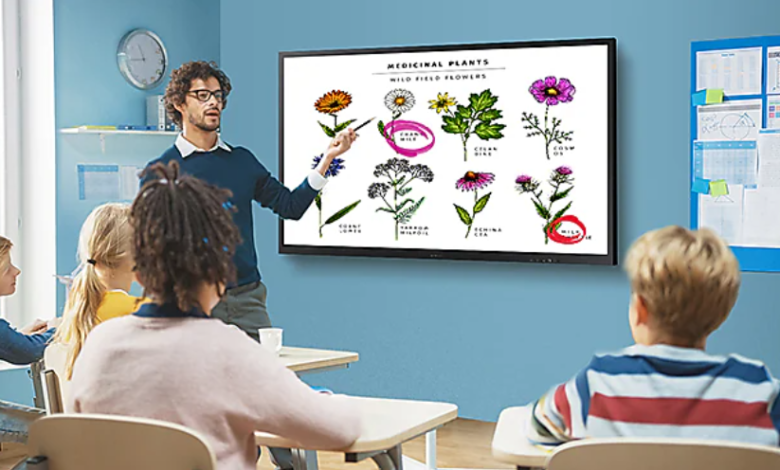Smartboard For Interactive Learning

Introduction To Educational Innovation
Technology has rapidly transformed how knowledge is shared and consumed in classrooms. Among the innovations making education more dynamic and accessible is the smartboard. This interactive whiteboard integrates hardware and software to create a digital learning environment where teachers and students engage in real-time activities. The smartboard plays a key role in the modern educational revolution, contributing to deeper learning and increased classroom participation.
Evolution From Traditional To Smart Classrooms
In traditional classrooms, chalkboards and whiteboards were standard tools for delivering lessons. While effective for their time, these methods lacked flexibility and engagement. The arrival of the smartboard introduced a solution that integrates digital features like multimedia, interactive writing, and internet access into a single teaching platform. As schools upgrade their infrastructure, these boards are becoming a central part of digital classrooms across the world.
Features Of A Smartboard
A smartboard offers several features that distinguish it from conventional boards:
- Touch-Enabled Surface: Allows users to write, draw, and interact using fingers or styluses.
- Multimedia Access: Displays videos, animations, images, and documents directly from a connected computer or cloud service.
- Annotation Tools: Teachers can write on images, highlight content, and capture notes in real-time.
- Connectivity: Seamless integration with internet browsers, learning platforms, and educational software.
- Multi-User Interaction: Some models support input from multiple users at once, perfect for group activities.
These features make the smartboard more than just a writing surface—it becomes a teaching assistant that supports content creation and student engagement.
See also: How Online Learning Platforms Are Changing Education for All Ages
Advantages In Classroom Settings
Increased Engagement
Using a smartboard encourages student interaction. Instead of simply watching the teacher write, students can take turns solving problems or presenting ideas directly on the screen. Animated visuals and audio content maintain interest, especially in younger learners.
Supports Diverse Learning Styles
Every student learns differently. Some absorb information better visually, while others prefer reading or hands-on activities. The smartboard accommodates all types through its flexible display of videos, text, audio, and diagrams.
Easy Content Delivery
Teachers can prepare lessons in advance and load them instantly during class. Content can be modified live, and new resources can be accessed via the internet without switching devices. The time saved increases efficiency in lesson delivery.
Saves And Shares Content
Unlike a chalkboard, which needs to be erased, a smartboard allows users to save content written or drawn during the lesson. These notes can be shared with students digitally for revision purposes, helping absent students catch up.
Use Cases In Various Subjects
The smartboard finds applications across a wide range of academic subjects:
- Science: Display 3D models of the human body, perform virtual experiments, and explain complex systems.
- Mathematics: Use digital graphing tools, geometry apps, and step-by-step equation solvers.
- Languages: Play pronunciation videos, run vocabulary games, and read stories interactively.
- History: Present historical timelines, interactive maps, and documentary clips.
- Art And Music: Draw using digital brushes or compose music using virtual keyboards.
Its versatility ensures that both teachers and students can explore the curriculum more deeply.
Impact On Teacher’s Workload
While the initial learning curve may seem high, the smartboard actually helps reduce teacher workload over time. Lesson plans can be reused, shared with colleagues, and improved continuously. Teachers no longer need to rewrite the same material for every session. Also, interactive quizzes and automated tools help in assessing student understanding quickly.
Improving Remote And Hybrid Learning
The demand for remote learning has increased dramatically. A smartboard enhances virtual teaching by allowing teachers to present, annotate, and interact with students in real-time. Many models come with screen-sharing capabilities, enabling their use during online classes. Students joining remotely can see exactly what’s happening on the board, keeping them involved in the session.
Integration With Educational Software
One of the smartboard’s biggest strengths is its compatibility with other educational platforms. Whether it’s Google Classroom, Microsoft Teams, or a subject-specific app, the smartboard can run various programs. This compatibility means schools do not need to change their existing systems to adopt the technology.
Support For Students With Disabilities
Accessibility is a vital part of modern education. The smartboard assists students with special needs through:
- Enlarged text and image display
- Audio support for hearing-impaired learners
- Interactive games that encourage participation for students with attention challenges
The flexibility of the smartboard ensures that all students, regardless of their physical or learning abilities, have equal opportunities in the classroom.
Challenges In Implementation
Despite its benefits, adopting a smartboard system comes with a few challenges:
- Cost: Initial investment is high, including hardware, software, and maintenance.
- Training: Teachers must be trained effectively to use all features.
- Technical Issues: Problems with connectivity, calibration, or outdated software can disrupt lessons.
However, these issues are manageable with planning, training, and regular maintenance. As prices drop and digital literacy improves, the smartboard is becoming more accessible for schools of different sizes.
The Future Of Smartboards
As educational needs evolve, the technology behind the smartboard continues to advance. The next generation of boards is expected to include:
- Artificial intelligence for auto-summarizing content
- Augmented reality for immersive subject exploration
- Enhanced cloud integration for storing and sharing lesson material
- Improved voice recognition and gesture control
These developments will make teaching even more personalized and efficient, helping educators meet the individual needs of every student.
Conclusion
The smartboard is transforming the traditional classroom into an interactive, technology-driven learning environment. It empowers both teachers and students by combining visual, auditory, and kinesthetic learning methods into one powerful platform. From engaging presentations to real-time collaboration, this tool is redefining how lessons are delivered and how students participate.
With continued investment and integration, the smartboard will play an even greater role in shaping future education. It is not just a trend but a lasting solution for institutions seeking to improve learning outcomes through technology.



